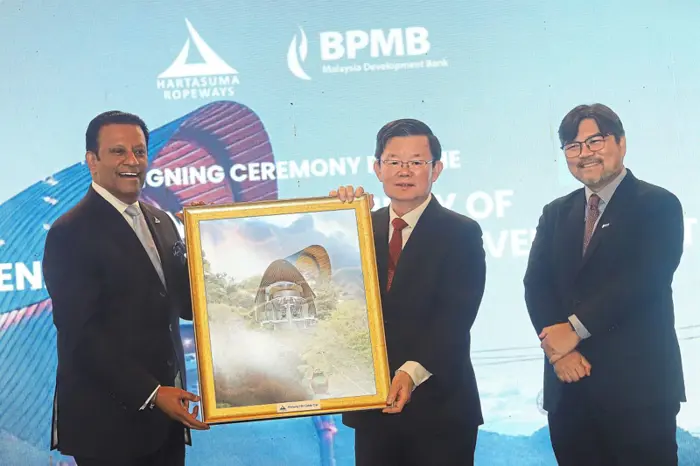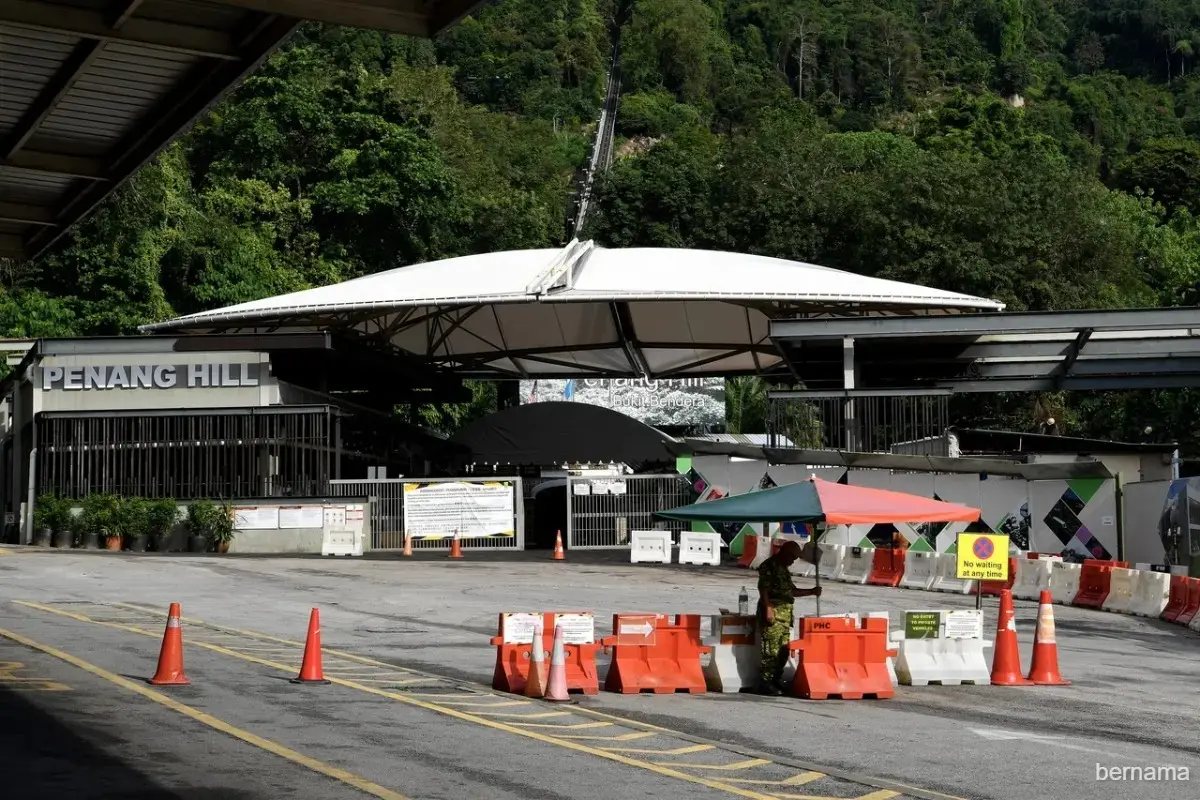By ARNOLD LOH
Thursday, 14 Aug 2025
(From left) Ravindran presenting a token of appreciation to Chow. With them is Mohamed Nazri at the signing ceremony for the financing of Penang Hill Cable Car Development. — LIM BENG TATT/The Star
ONE feature of the coming Penang Hill cable car system that often gets misunderstood is its ability to “carry 1,400 passengers per hour in each direction”.
“That technical specification determines the strength of the pylons, cable or ropeway, power of the motors and much more,” explained Penang Hill Corporation general manager Datuk LL Cheok.
Speaking at the signing of a RM367.2mil financing facility agreement between Bank Pembangunan Malaysia Bhd (BPMB) and cable car concessionaire Hartasuma Sdn Bhd, Cheok said the plan involved 55 gondolas along the ropeway, but not all would be in service at the same time.
“There will be spares at the bay. Each gondola can take six to eight passengers but there will be many times when a gondola will have just two to four passengers, or travel empty,” he said.

Cheok explained that the ropeway would run in a loop, so there would be no way to wait until a certain gondola was full at either station.
“In peak holiday seasons, the funicular usually carries about 450 passengers a trip at 6m/s.”
He said that a 2019 study showed Penang Hill could accommodate a little over 6,000 visitors a day.
“Tiger Hill used to be just jungle but now there are beautiful trails you can explore there once you reach the top of Penang Hill,” Cheok added.
Penang Chief Minister Chow Kon Yeow, who witnessed the signing of the financing facility, said the timing could not have been more appropriate.

“As of July 25, the Penang Hill funicular service crossed the one million ridership mark for the year.
“This signals the continued popularity and growing demand for access to Penang Hill,” he said.
BPMB managing director Mohamed Nazri Omar said the financing reflected the bank’s commitment to sustainable tourism infrastructure.
“We are proud to support a project that builds on Penang Hill’s longstanding appeal as a premier eco-tourism destination.
Visitor numbers are steadily rebounding with 1.8 million in 2024, up from 1.6 million the year before, and approaching pre-COVID-19) pandemic levels of 1.9 million.
“With the cable car in place, the annual number is expected to nearly double, reaching up to 3.96 million by 2035,” he said.
Mohamed Nazri said the cable car would be offering more than transport.
“It eases pressure on the existing funicular railway and ensures uninterrupted access during maintenance or emergencies.
“It not only enhances the visitor experience but also unlocks new socio-economic opportunities,” he said.
Hartasuma executive director Tan Sri Ravindran Menon said securing the financing facility was a defining moment for the project.
“Once up and running, it will become part of the everyday stories of families, the journeys of visitors and the living folklore of Penang,” he said.
Under a long-term public-private partnership with the state, Hartasuma will design, develop, finance, operate and maintain the cable car system and its surrounding development.
The company is targeting early 2027 for completion.
Environmental safeguards will include integration of solar energy, sustainable construction techniques and protection of the Penang Hill Unesco Biosphere Reserve.
First developed by the British in the late 1700s as a cool retreat from the tropical heat, Penang Hill became known for its sprawling colonial bungalows, tea terraces, and panoramic views of George Town.
The funicular railway opened in 1923, replacing the original bridle paths and sedan chair service.
Sources: The Star





